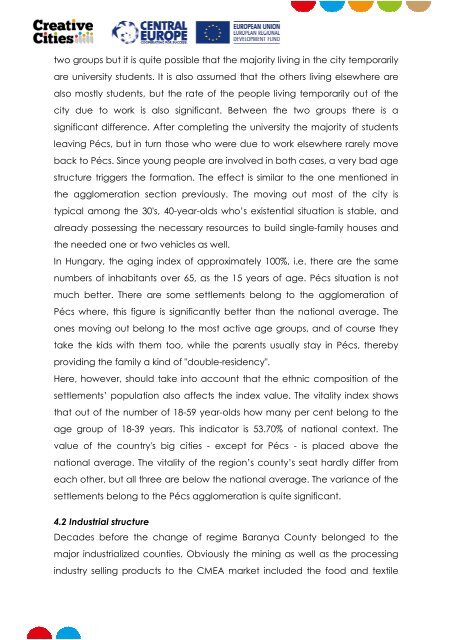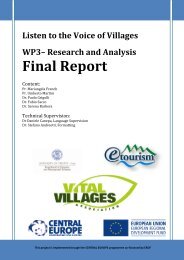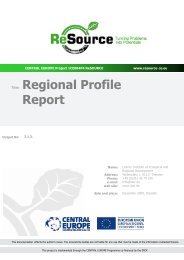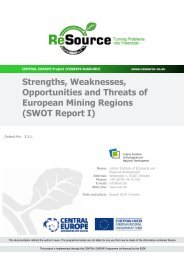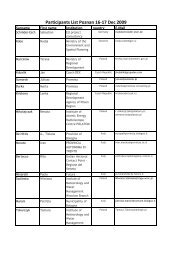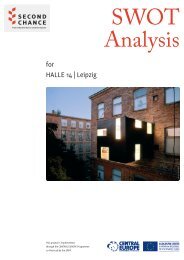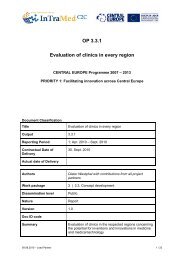SWOT Analysis - Central Europe
SWOT Analysis - Central Europe
SWOT Analysis - Central Europe
You also want an ePaper? Increase the reach of your titles
YUMPU automatically turns print PDFs into web optimized ePapers that Google loves.
two groups but it is quite possible that the majority living in the city temporarily<br />
are university students. It is also assumed that the others living elsewhere are<br />
also mostly students, but the rate of the people living temporarily out of the<br />
city due to work is also significant. Between the two groups there is a<br />
significant difference. After completing the university the majority of students<br />
leaving Pécs, but in turn those who were due to work elsewhere rarely move<br />
back to Pécs. Since young people are involved in both cases, a very bad age<br />
structure triggers the formation. The effect is similar to the one mentioned in<br />
the agglomeration section previously. The moving out most of the city is<br />
typical among the 30's, 40-year-olds who’s existential situation is stable, and<br />
already possessing the necessary resources to build single-family houses and<br />
the needed one or two vehicles as well.<br />
In Hungary, the aging index of approximately 100%, i.e. there are the same<br />
numbers of inhabitants over 65, as the 15 years of age. Pécs situation is not<br />
much better. There are some settlements belong to the agglomeration of<br />
Pécs where, this figure is significantly better than the national average. The<br />
ones moving out belong to the most active age groups, and of course they<br />
take the kids with them too, while the parents usually stay in Pécs, thereby<br />
providing the family a kind of "double-residency".<br />
Here, however, should take into account that the ethnic composition of the<br />
settlements’ population also affects the index value. The vitality index shows<br />
that out of the number of 18-59 year-olds how many per cent belong to the<br />
age group of 18-39 years. This indicator is 53.70% of national context. The<br />
value of the country's big cities - except for Pécs - is placed above the<br />
national average. The vitality of the region’s county’s seat hardly differ from<br />
each other, but all three are below the national average. The variance of the<br />
settlements belong to the Pécs agglomeration is quite significant.<br />
4.2 Industrial structure<br />
Decades before the change of regime Baranya County belonged to the<br />
major industrialized counties. Obviously the mining as well as the processing<br />
industry selling products to the CMEA market included the food and textile


